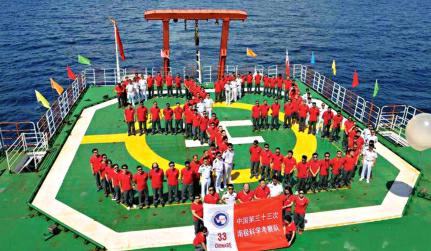Sci-Tech
New Heavy-lift Carrier Rocket
On November 3, China launched its new heavy-lift carrier rocket, Long March 5. The rocket blasted off at 8:43 pm Beijing Time from the Wenchang Space Launch Center in South Chinas Hainan Province. The payload was sent into its preset orbit about 30 minutes after lift-off. The State Administration of Science, Technology and Industry for National Defense (SASTIND) and China National Space Administration (CNSA) later announced the complete success of the launch.
The successful launch has propelled China to the forefront of the world in terms of rocket carrying capacity, and marks a milestone in Chinas transition from a major player in space to a major power in space.
With a 5-meter diameter core stage, Long March 5 is much thicker than Chinas previous carrier rockets which had 3.35-meter diameter core stages. Long March 5 is a large, two-stage rocket with a payload capacity of 25 tons to low-Earth orbit and 14 tons to geostationary transfer orbit, making it Chinas largest carrier rocket. Its geostationary transfer orbit carrying capacity is 2.5 times. The new rocket is about 57 meters long, with a takeoff weight of 870 tons and a thrust of 1,060 tons larger than previous models.
Experts say Long March 5 will also lay the foundations for future rockets with heavier payload capabilities. With a heavy-lift carrier rocket, China will be able to build a permanent manned space station, as well as explore the Moon and Mars. In 2017, China will launch the Change 5 probe to the Moon, which will bring back lunar samples to Earth. The 20-ton core module of Chinas first space station will also be delivered by the rocket in 2018. The rocket will launch a Mars probe around 2020.
China Launches 33rd Antarctic Expedition
China launched its 33rd Antarctic expedition on the morning of November 2. The research vessel and icebreaker Xuelong (Snow Dragon) set sail from the Shanghai docks.
A 256-member team embarked on a 161-day trip covering 31,000 nautical miles, according to Sun Bo, deputy director of the Polar Research Institute of China and leader of the team. They will visit Zhongshan, Kunlun, Taishan and Changcheng stations, performing various research tasks. The team will also carry out an environmental clean-up around the stations.
The expedition has a list of 72 tasks to perform, including preliminary site selection for Chinas new base on the Ross Sea and scientific investigations on fixed-wing aircraft.
The Xuelong will arrive at Zhongshan station in east Antarctica in early December. After unloading at Zhongshan, Kunlun, and Taishan stations, the ship will head to Chile to resupply. In late January it will survey the Ross Sea, returning to Zhongshan station in late February before departing for home in early March. The team is scheduled to arrive in Shanghai on April 11 next year.
New Tibetan-language Input Software
New Tibetan-language input software was released in Lhasa, capital of Tibet Autonomous Region on November 3.
The new software was developed by a speech and language laboratory at Tibet University. With Tibetan-language speech and handwriting recognition technology, the software provides a more convenient and accurate input method for Tibetans. The software can instantly recognize and produce standard Tibetan, with an accuracy rate of 97 percent.
Lozang Ganden, a professor at Tibet University, said: “Unlike traditional spelling input software, this software has dramatically improved our work and learning efficiency.”
China to Launch First E-commerce Satellite in 2017
China plans to launch its first e-commerce satellite in 2017, with the primary purpose of using satellite data in agriculture. The plan was announced by the China Academy of Launch Vehicle Technology, China Aerospace Museum, and Juhuasuan, an arm of e-commerce giant Alibaba, on October 31 during an international aviation and aerospace forum in Zhuhai, Guangdong Province.
“In an era of space economy, the potential of a commercial space industry is immeasurable,” Han Qingping, president of Chinarocket Co., Ltd., said at the forum.
In 2015, the value of the global space industry amounted to US $330 billion, 76 percent of which was derived from commercial activities.
Chinese authorities are making efforts –including drafting legislation – to support and regulate the development of a commercial space industry.
“China is speeding up the making of Space Law, with the aim of drafting the new law by the end of this year,” said Hu Chaobin, an official from the State Administration of Science, Technology and Industry for National Defense.

